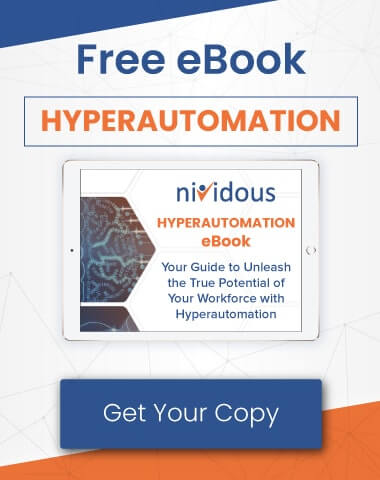Think about all the software you use to run your business. These may be huge platforms, like Enterprise Resource Planning (ERP) systems. Or they may be targeted: marketing automations, workflow management, internal communications channels, etc. Whatever they are, they’re probably proliferating.
Netskope’s July 2021 Cloud and Threat Report found that enterprises with 500 to 2,000 employees averaged 805 cloud-based apps per month—and that’s cloud apps alone. Everything’s easier—and some things may only be possible—when these systems are integrated. Siloed systems can’t share data; that could leave you stuck moving numbers from one window to another most of your working hours. Integration solves the problem.
For decades, one key technology allowed software systems to work together: an Application Programming Interface, or API. If you use computers, you benefit from API integrations, which are so common as to be nearly invisible to casual users. But if you don’t have a strong background in Information Technology (IT), API integration can be hard to conceptualize.
Here are the basics of API integration, meaning, specifically, what it is, where it’s deployed, and what you can do if an API doesn’t solve your integration challenges.
Not sure where to start with digital automation in healthcare?
Get a trained automation bot in less than a month, at no risk, with Nivdous Quick Start Program.
What is API integration?
Before we discuss integrations, we should define the term API—and to understand what an API is, it helps to define the component terms:
- Application – a discrete software system
- Programming – the instructions that tell applications what to do
- Interface – a connection that allows users (people or software) to exchange data
An API is the software layer that allows two digital systems to exchange data—and often functionality. But what’s an API integration?
An API integration is a connection between two or more digital systems—web applications, desktop platforms, any type of software—that allows them to share data.
People can also interact with a system through the API, but generally, when we discuss API integration, we’re talking about system-to-system communication. But APIs aren’t static machines that perform a single task the same way for every user. Programmers build APIs with specific functionality in mind and may give users lots of options for how they perform. They can also provide access for other developers to build third-party apps that enhance the functionality of a given platform. In short, there’s no one standard API—and API integration may not be available for every combination of applications, at least not without custom coding.
Generally speaking, APIs break down into three categories:
- An open API is made available to third-party developers, allowing them to create apps that integrate into the original system by design.
- A partner API is more controlled; developers of an application only share it with approved business partners, so they can integrate their systems with the software.
- An internal API isn’t available to anyone but an application’s developers. Since it’s the most tightly controlled, it’s also the most secure—but it limits broad-based integrations.
Any combination of these APIs may be used to create custom system integrations—but, again, that generally requires a team of developers. To get a better idea of how APIs function in practice, let’s look at a few examples.
What are some common examples of API integration?
To most users, API integrations look like core functions of an application, so they can be hard to spot. Here are a few examples drawn from both everyday internet use and enterprise computing:
- Third-party logins. Cloud apps are increasingly giving users the option to log in using an existing account, like email or social media. An API connects the third-party account to the cloud app, transmitting authentication data—and saving users from having to remember another password.
- E-commerce payments. Every e-commerce site needs a way to accept secure payments. Payment gateways like Authorize.net, PayPal, and Stripe provide this functionality—and they connect to e-commerce sites through an API.
- Enterprise systems architecture. Your ERP may need to share information with General Ledger (GL) software, a Customer Relationship Management (CRM) platform, a Warehouse Management System, and more—and the data has to flow both ways. That’s often accomplished via an API.
One of the main purposes of an API integration is to achieve digital automation—letting the machines complete data-handling tasks so human workers can focus on higher-value tasks. But APIs are a hard-coded form of integration; changes, updates, and corrections require significant IT resources. In other words, they require coders, who can take months or years to build an integration—and who charge accordingly. So, API integration does have its limits. That leads to our next question.
Are there any alternatives to API integration?
As we mentioned, APIs have been around for a long time. An API for legacy systems might not provide the functionality you need—after all, today’s business goals don’t always match the developer visions of 20 years ago. Even newer APIs are built to do certain things: To share one set of information but not another, for instance. Unless you have the IT power to program an API at the code level, you may want to look for an alternative.
Try end-to-end intelligent automation from Nividous.
Sign up for a free, personalized demo.
Rather than integrating software systems individually, digging into APIs to allow them to interact, the Nividous digital automation platform approaches the process as a whole. It gives users a single-pane-of-glass interface that operates through every system, even where APIs fail. In short, it automates entire business processes from beginning to end—and that automation takes place through connections between software systems.
When APIs don’t work, intelligent automation will. This technology integrates systems either at the data level or by operating through their user interfaces, so you bypass the API entirely. Users interact with one system—the Nividous platform—solving the growing problem of multi-platform fatigue.
What does systems integration with intelligent automation look like?
- A leading consumer goods provider used the Nividous platform to automate accounts payable from start to finish, connecting its ERP with multiple invoice delivery systems that it used to manage manually. This end-to-end automation reduced manual work by 90%, sped up turnaround time by 85%, and saved 50% of the full-time equivalent hours devoted to the task. Read the full case study.
- A top financial services group automated client-facing reporting, including submission and encryption, plus creating tickets in Salesforce. The automation connected multiple digital systems, including external websites and internal legacy platforms. These integrations, and the automation they allowed, cut down on reporting cycle time by 70%, reduced administrative effort by 80%, and achieved 65% better visibility throughout the process. Read the full case study.
- The Nividous platform was used by a leading brokerage firm that required a seamless connection between their CRM system and multiple stock exchange portals, including MCX, NCDEX, NSE, and BSE. The technology connected these systems in sophisticated ways, including captcha handling, to fully automate franchise registrations. That led to 90% less manual work, a 65% reduction in turnaround time, and 85% fewer human errors. Ultimately, the automation achieved 100% data accuracy throughout the process. Read the full case study.
Of course, APIs remain a significant part of the technology stack. Legacy systems will stick around for a long time yet; we’re unlikely to see the day when API integration isn’t a core part of systems architecture. But intelligent automation, which handles complex computing problems with Artificial Intelligence (AI), provides seamless system connections without the downsides of API integration. Contact Nividous to learn how intelligent automation can improve operations—and software integrations—at your company.





